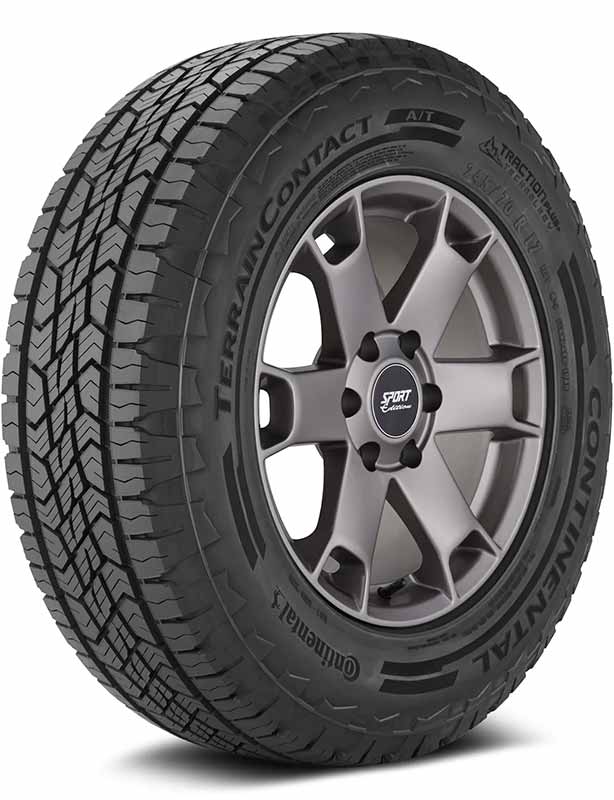Have you ever glanced at your tire and wondered what all those numbers and letters mean? Or perhaps you’ve been in a situation where you needed to replace a tire and felt overwhelmed by the technical jargon.
Understanding tire load ranges is crucial for every vehicle owner, ensuring safety, performance, and value for money.
What are tire load ranges?
Tire load ranges indicate the maximum weight a tire can safely support when correctly inflated. They provide insights into the tire’s strength, durability, and suitability for specific vehicles and driving conditions.
In this article, we’ll demystify the concept of tire load ranges, delve deep into terms like load index, speed rating, and ply tires, and empower you with the knowledge to make informed decisions for safer, efficient driving. Whether you’re a novice driver or an experienced motorist, this guide promises clarity, insights, and actionable steps to elevate your understanding of tires.
What is Tire Load Range?
Tire load range, often referred to as the load rating or load index, represents the maximum weight a tire can safely support when properly inflated. It’s a direct indicator of the tire’s load-carrying capacity. This is vital because choosing a tire with an inappropriate load range can lead to premature tire wear, decreased fuel efficiency, and even dangerous blowouts.
How It Affects Safety, Performance, and Value for Money
- Safety: A tire’s load range ensures that the tire can handle the weight of the vehicle and its contents. Using a tire with a lower load range than required can compromise the tire’s structural integrity, leading to potential accidents.
- Performance: The right load range ensures optimal tire performance. It affects how the tire responds to different road conditions, from smooth highways to rough terrains.
- Value for Money: Ensuring the correct load range means your tires will wear evenly and last longer. This not only saves money in the long run but also ensures you’re getting the most out of your investment.
For a deeper dive into how tire size affects load range, check out our detailed guide on Load Range XL vs. E.
Load Range and Ply Rating Chart
| Load Range | Ply Rating | Max Load Carrying Air Pressure |
| Standard Load (SL) | 4 | @ 36 PSI |
| Extra Load (XL) | 4 | @ 42 PSI |
| C1 | 6 | @ 50 PSI |
| C2 | 6 | @ 35 PSI |
| D1 | 8 | @ 65 PSI |
| D2 | 8 | @ 50 PSI |
| E1 | 10 | @ 80 PSI |
| E2 | 10 | @ 65 PSI |
| F1 | 12 | @ 95 PSI |
| G | 14 | @ 110 PSI |
Decoding the Tire’s Sidewall
Every tire’s sidewall is like a storybook, revealing essential details about its capabilities, design, and purpose. For the uninitiated, these markings might seem like a jumble of numbers and letters. However, with the right knowledge, you can decode this information to make informed decisions about your vehicle’s tires.
A tire’s sidewall contains various markings, each serving a specific purpose:
- Tire Size: This indicates the tire’s dimensions, such as its width, aspect ratio, and diameter. For instance, a marking like “225/45R17” provides details about the tire’s width (225mm), its aspect ratio (45%), and its diameter (17 inches).
- Load Index: Representing the tire’s maximum weight-carrying capacity, the load index is a crucial number for vehicle safety. A higher load index indicates a higher load-carrying capacity.
- Speed Rating: This letter indicates the maximum speed at which the tire can carry its load safely. For instance, a “V” rating means the tire can safely handle speeds up to 149 mph.
- Ply Rating: This denotes the tire’s construction and its ability to handle loads. Historically, it referred to the number of cotton layers used in the tire, but today it indicates the tire’s strength.
Tire Load Index Chart
The full chart ranges from 0 to 150 but we will abbreviate it to 70 through 126 since the more extreme numbers are much less common. You can view the full chart at Discount Tire.
| Load Index | Carrying Capacity (pounds) |
|---|---|
| 70 | 739 |
| 71 | 761 |
| 72 | 783 |
| 73 | 805 |
| 74 | 827 |
| 75 | 853 |
| 76 | 882 |
| 77 | 908 |
| 78 | 937 |
| 79 | 963 |
| 80 | 992 |
| 81 | 1,019 |
| 82 | 1,047 |
| 83 | 1,074 |
| 84 | 1,102 |
| 85 | 1,135 |
| 86 | 1,168 |
| 87 | 1,201 |
| 88 | 1,235 |
| 89 | 1,279 |
| 90 | 1,323 |
| 91 | 1,356 |
| 92 | 1,389 |
| 93 | 1,433 |
| 94 | 1,477 |
| 95 | 1,521 |
| 96 | 1,565 |
| 97 | 1,609 |
| 98 | 1,653 |
| Load Index | Carrying Capacity (pounds) |
|---|---|
| 99 | 1,709 |
| 100 | 1,764 |
| 101 | 1,819 |
| 102 | 1,874 |
| 103 | 1,929 |
| 104 | 1,984 |
| 105 | 2,039 |
| 106 | 2,094 |
| 107 | 2,149 |
| 108 | 2,205 |
| 109 | 2,271 |
| 110 | 2,337 |
| 111 | 2,403 |
| 112 | 2,469 |
| 113 | 2,535 |
| 114 | 2,601 |
| 115 | 2,679 |
| 116 | 2,756 |
| 117 | 2,833 |
| 118 | 2,910 |
| 119 | 2,998 |
| 120 | 3,086 |
| 121 | 3,197 |
| 122 | 3,307 |
| 123 | 3,417 |
| 124 | 3,527 |
| 125 | 3,638 |
| 126 | 3,748 |
Explanation of the Tire Load Index Chart and Its Relevance
The tire load index chart is a standardized table that matches a tire’s load index number to its specific weight-carrying capacity. For instance, a load index of 91 might correspond to a maximum weight of 615 kg.
Understanding this chart is essential for:
- Ensuring your vehicle’s tires can handle its weight, especially when fully loaded.
- Making informed decisions when replacing tires.
- Optimizing vehicle performance and safety.
For a comprehensive understanding of how the tire load index impacts your driving experience, explore our in-depth article on Tire Load Index.
Understanding Load Index and Load Rating
The world of tires is filled with technical terms that can sometimes be overwhelming. However, two of the most crucial terms that every vehicle owner should be familiar with are “Load Index” and “Load Rating.” These terms are pivotal in ensuring your vehicle’s safety and optimal performance on the road.
Definition of Load Index and Its Relation to Tire Load Index Capacity
The Load Index is a numerical code associated with the maximum weight a tire can support. It’s not just a random number; it corresponds to a specific weight in pounds or kilograms. For instance, a Load Index of 85 might indicate a maximum weight of 515 kg or 1135 lbs.
The Tire Load Index Capacity is the actual weight the tire can support corresponding to its Load Index. It’s a direct reflection of the tire’s strength and durability.
The Difference Between Load Rating and Speed Rating
While both terms are essential, they serve different purposes:
- Load Rating: This refers to the tire’s ability to support a specific weight. It’s directly related to the Load Index and is crucial for vehicle safety, especially when carrying heavy loads.
- Speed Rating: As previously mentioned, this denotes the maximum speed the tire can handle safely. It’s vital for performance, especially for those who often drive on highways or in conditions requiring higher speeds.
Real-World Examples to Illustrate the Concept
Imagine you’re planning a road trip with your family. Your vehicle is packed with luggage, camping gear, and other essentials. Here, the Load Index becomes crucial. If your tires have a lower Load Index than required, they might not safely support the vehicle’s weight, leading to potential risks.
On the other hand, if you’re someone who enjoys the thrill of speed and often finds themselves on open highways, understanding the Speed Rating is essential. It ensures that your tires can handle the speed without compromising safety.
For those keen on diving deeper into the nuances of tire sizes and their impact on Load Range, our article on SL Load Range offers a wealth of information.
Dive into Load Carrying Capacity
Load carrying capacity is a term that resonates with every vehicle owner, especially those who frequently transport heavy goods or travel with their vehicles fully loaded. It’s a measure that ensures both the safety of the vehicle’s occupants and the longevity of the tires.
Explanation of Load Carrying Capacity and Its Importance
Load Carrying Capacity refers to the maximum weight a tire can support when inflated correctly. It’s an essential metric as:
- It ensures the tire doesn’t get overloaded, which can lead to premature wear or even a blowout.
- It guarantees optimal vehicle performance, especially when cornering, braking, or accelerating.
- It ensures fuel efficiency by reducing the strain on the vehicle’s engine.
Factors Affecting a Tire’s Load Capacity
Several factors can influence a tire’s load capacity:
- Tire Size: Larger tires generally have a higher load capacity due to their increased surface area.
- Tire Construction: The materials used and the tire’s design can impact its strength and, consequently, its load capacity.
- Inflation Pressure: A tire’s load capacity is directly related to its inflation pressure. Under-inflated tires can’t support as much weight as those inflated to the manufacturer’s specifications.
The Relationship Between Load Pressure and Load Capacity
Load pressure is the recommended air pressure for a tire to support its maximum load capacity. It’s crucial to maintain the correct load pressure because:
- It ensures the tire can support the vehicle’s weight, especially when fully loaded.
- It prevents uneven tire wear, which can lead to reduced tire lifespan.
- It guarantees optimal vehicle performance, especially in terms of handling and fuel efficiency.

Light Truck Tires vs. Passenger Tires
When it comes to choosing the right tires for your vehicle, understanding the difference between light truck tires and passenger tires is paramount. Both types have their unique characteristics, advantages, and purposes, making them suitable for specific vehicles and driving conditions.
Distinction Between Light Truck Tires and Passenger Tires
- Light Truck Tires (LT):
- Purpose: Designed primarily for pickup trucks, SUVs, and larger vehicles that often carry heavy loads or tow trailers.
- Characteristics: They have a sturdier construction, higher load-carrying capacities, and are built to withstand rough terrains and heavy-duty tasks.
- Markings: Often marked with an “LT” at the beginning or end of the tire size.
- Passenger Tires (P):
- Purpose: Crafted for passenger cars, minivans, and some smaller SUVs that primarily transport people rather than heavy cargo.
- Characteristics: They offer a smoother ride, better fuel efficiency, and are optimized for comfort and performance on highways and city roads.
- Markings: Typically start with a “P” in the tire size, e.g., P225/50R17.
How Load Range Letters, Especially Load Range E, Play a Role
Load range letters, such as Load Range E, indicate the tire’s load-carrying capacity and its inflation limits. For instance:
- Load Range E (LRE): Commonly found on light truck tires, it signifies a tire designed to carry a heavier load, making it suitable for trucks, larger SUVs, and commercial vehicles.
Understanding these load range letters is crucial as they provide insights into the tire’s capabilities and whether it’s suitable for your vehicle and driving needs.
Importance of Tire Size in Determining the Right Tire for Your Vehicle
Tire size is more than just numbers and letters; it’s a direct reflection of the tire’s design, capabilities, and suitability for specific vehicles. For instance:
- A larger tire size might indicate a higher load-carrying capacity, making it suitable for trucks or larger SUVs.
- Conversely, a smaller tire size might be optimized for performance and comfort, making it ideal for passenger cars.

Ply Tires: What You Need to Know
In the realm of tires, the term “ply” often surfaces, especially when discussing durability and strength. Ply refers to the layers of material that make up the tire, and understanding its significance can greatly influence your tire selection process.
Introduction to Ply Tires and Tire Ply Rating
- Ply Tires: Historically, the term “ply” referred to the number of cotton layers used in the tire’s construction. Today, while the materials have evolved, the concept remains the same. It’s about the layers – be it rubber, steel, or other composites – that constitute the tire.
- Tire Ply Rating: This rating indicates the tire’s strength and load-carrying capacity. A higher ply rating means the tire can handle heavier loads, making it suitable for heavy-duty tasks and rough terrains.
How Ply Affects the Tire Load Range and Load Rating
The ply of a tire directly impacts its load range and load rating:
- Strength and Durability: Tires with a higher ply rating are generally more robust and durable, capable of withstanding challenging conditions and heavier loads.
- Performance: While tires with a higher ply rating are sturdy, they might not offer the same level of comfort as those with a lower ply rating. It’s a trade-off between durability and ride comfort.
- Safety: Ensuring the correct ply rating is crucial for safety. Using a tire with a lower ply rating than required for your vehicle or the loads you carry can lead to tire failures.
Resources
Below are some links you may find helpful when learning about tires:
- Tire Load Range and Ply Rating (In-Depth Guide) – TireMart.com Tire Blog
- Tire Load Range Explained – TiresDoc.com
- Load Range vs Load Index | Tire Load Range Chart – Discount Tire
Final Thoughts
Understanding tire load ranges is not just about deciphering the numbers and letters on your tire’s sidewall. It’s about ensuring the safety, performance, and longevity of your tires, and by extension, your vehicle.
By grasping the intricacies of load index, speed rating, and ply tires, you’re not only making informed decisions for your vehicle but also ensuring a safer driving experience for yourself and others on the road.
Good luck and happy motoring.




